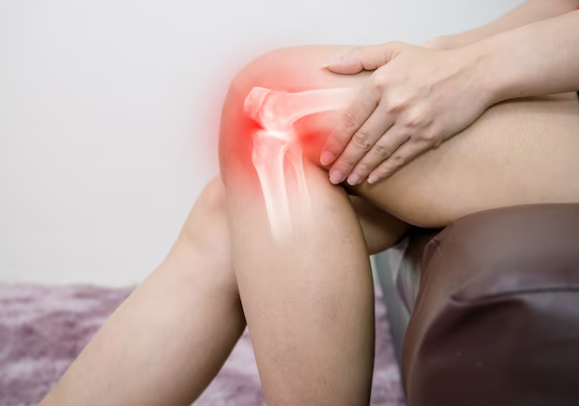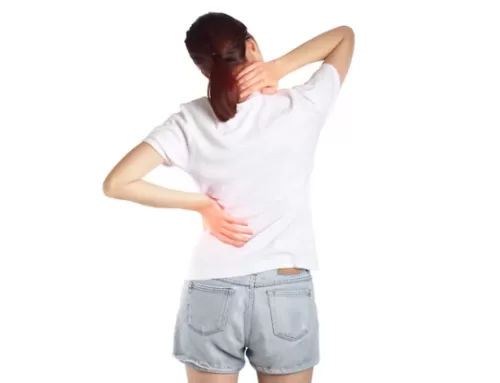Joint inflammation can be a common occurrence in our bodies, causing pain and discomfort that affects our daily lives. It can be caused by various reasons, such as injury, overuse, or conditions like arthritis. While there are many treatments available to alleviate joint inflammation, chiropractic care is often overlooked as a possible solution.
In this blog post, we will discuss how chiropractic techniques can effectively alleviate pain and promote healing in joint inflammation. We will dive into the science behind chiropractic care and explore some of the most common techniques used by chiropractors to address joint inflammation.
So, let’s roll up our sleeves and learn more about how chiropractic care can benefit those dealing with joint inflammation.
How Chiropractic Care Works
Chiropractic care offers a drug-free and non-invasive solution for addressing diverse health issues. It focuses on the alignment of the musculoskeletal system, particularly the spine, to ensure proper functioning of the nervous system.
The nervous system has a crucial function in the body’s natural healing and self-regulation. A misaligned When the spine is misaligned, it can exert pressure on the nerves, interrupting the communication between the brain and various body parts. Consequently, this can result in pain, inflammation, and other health concerns.
Chiropractors use their hands or specialized instruments to perform adjustments to realign the spine and relieve any nerve interference. By doing so, they help restore proper nerve function, allowing the body to heal and regulate itself more effectively.
What are the Different Chiropractic Healing Techniques for Joint Inflammation?
Now that we understand how chiropractic care works, let’s explore some of the techniques used by chiropractors to address joint inflammation.
Spinal Manipulation
Spinal manipulation, also spinal adjustment, is a widely utilized technique in chiropractic treatment. It involves applying a controlled, sudden force to a specific joint in the spine, which helps improve mobility and reduce inflammation.
By manipulating the spine, chiropractors can also address any underlying misalignments that may be contributing to joint inflammation. This technique allows for increased blood flow and nutrient delivery to affected joints, promoting healing and reducing pain.
Soft Tissue Therapy
Soft tissue therapy encompasses the application of pressure on the body’s soft tissues, including muscles and tendons, with the objective of relieving tension and facilitating the healing process. This technique can help reduce joint inflammation by improving blood flow and reducing muscle spasms.
Some common soft tissue therapies used in chiropractic care include massage, trigger point therapy, and myofascial release. These techniques not only target the affected joint but also address any surrounding muscles that may be contributing to the inflammation.
Electrical Stimulation
Electrical stimulation is the application of gentle electrical currents to targeted regions of the body. This technique may aid in the reduction of inflammation by enhancing blood circulation and triggering the production of endorphins, which are the body’s innate pain relievers.
Chiropractors may use electrical stimulation in conjunction with other techniques to provide pain relief and promote healing. This technique can also help improve muscle strength and range of motion in the affected joint.
Heat and Cold Therapy
Heat therapy consists of the application of heat to the affected joint, while cold therapy involves utilizing ice or cold packs. Both of these techniques have the potential to effectively decrease inflammation and offer pain relief.
Heat therapy functions by enhancing blood circulation to the affected region, thus supporting healing and alleviating muscle tension. Conversely, the mechanism of cold therapy involves the constriction of blood vessels in the impacted area, aiding in the reduction of swelling and pain.
Chiropractors may recommend alternating between heat and cold therapy for maximum benefits. This technique can also be used as a part of an at-home care plan to manage joint inflammation.
Acupuncture
Acupuncture is a traditional practice of Chinese medicine where thin needles are inserted into specific body points. This technique can effectively alleviate pain and inflammation by stimulating the nervous system and triggering the release of natural pain-relieving substances.
Chiropractors may use acupuncture to target the affected joint, as well as other areas of the body that may be contributing to the inflammation. This technique can also help improve overall well-being and promote healing in the body.
Massage Therapy
Massage therapy is a method where pressure is applied to the muscles, tendons, and ligaments in the affected joint. This method can help reduce tension and stiffness, as well as increase blood flow to promote healing.
Chiropractors may use massage therapy in conjunction with other techniques to target specific areas of inflammation and pain. This technique can also help improve range of motion in the affected joint.
Nutritional Counseling
In managing inflammation, giving importance to proper nutrition is crucial. Chiropractors may offer nutritional counseling to their patients, helping them make dietary changes that can reduce inflammation and promote healing.
Inflammation is often linked to food sensitivities and allergies, so chiropractors may recommend eliminating or reducing certain foods from their patients’ diets. They may also suggest incorporating anti-inflammatory foods, such as leafy greens, fatty fish, and berries.
Exercise
Regular exercise can help reduce joint inflammation by strengthening the muscles around the affected area and promoting blood flow. Chiropractors may recommend specific exercises that target the affected joint and help reduce pain and stiffness.
However, it is essential to consult with a chiropractor before starting any new exercise routine. They can assess the patient’s condition and provide personalized recommendations for safe and effective exercises.
By understanding the benefits of chiropractic care and actively participating in your healing process, you can obtain better joint function while also improving your overall quality of life. If you’re seeking relief from common issues, consider consulting with a chiropractor to explore personalized treatment options.
What are some ways to promote healing after a chiropractic manipulation?
Following chiropractic manipulation, it is crucial to prioritize self-care for fostering healing and minimizing subsequent inflammation. Here are a few approaches you can take to achieve that:
Rest
Resting is crucial after a chiropractic manipulation. It allows the body to heal and recover from any stress or strain placed on the joints during the treatment. Make sure to get enough sleep and avoid strenuous activities that may worsen the inflammation.
Hydrate
Drinking plenty of water is essential for promoting healing and reducing inflammation. Water helps flush out toxins from the body, which can contribute to joint inflammation. It also keeps the joints lubricated, helping reduce friction and pain.
Follow a healthy diet
As mentioned earlier, certain foods can contribute to joint inflammation while others can help alleviate it. A healthy, well-balanced diet rich in anti-inflammatory foods such as fruits and vegetables, lean proteins, and healthy fats can aid in the healing process.
Consider supplements
Some supplements may also be beneficial in reducing joint inflammation and promoting healing. Omega-3 fatty acids, turmeric, ginger, and glucosamine are all-natural anti-inflammatory supplements and can help with joint pain.
Stretching and exercise
 Regular stretching and low-impact exercises like yoga, swimming, or walking can also be beneficial in managing joint inflammation. These activities help improve flexibility, strengthen muscles, and reduce stress on the joints. However, always consult a chiropractor before starting any new exercise routine to ensure it is safe for your specific condition.
Regular stretching and low-impact exercises like yoga, swimming, or walking can also be beneficial in managing joint inflammation. These activities help improve flexibility, strengthen muscles, and reduce stress on the joints. However, always consult a chiropractor before starting any new exercise routine to ensure it is safe for your specific condition.
Embracing healthy behaviors such as the right amount of fluids, rest, and nutrition can assist your body’s natural healing process and boost the effects of chiropractic treatment. Maintain an open line of communication with your chiropractor and do your best to heed their advice if you want the best possible outcomes.
Stay Proactive in Your Approach to Joint Wellness!
You can achieve optimal joint health and overall well-being with the right combination of chiropractic care and healthy habits. Let chiropractic care support your journey toward a pain-free and active life. Contact Peak Potential Family Chiropractic for more information!





